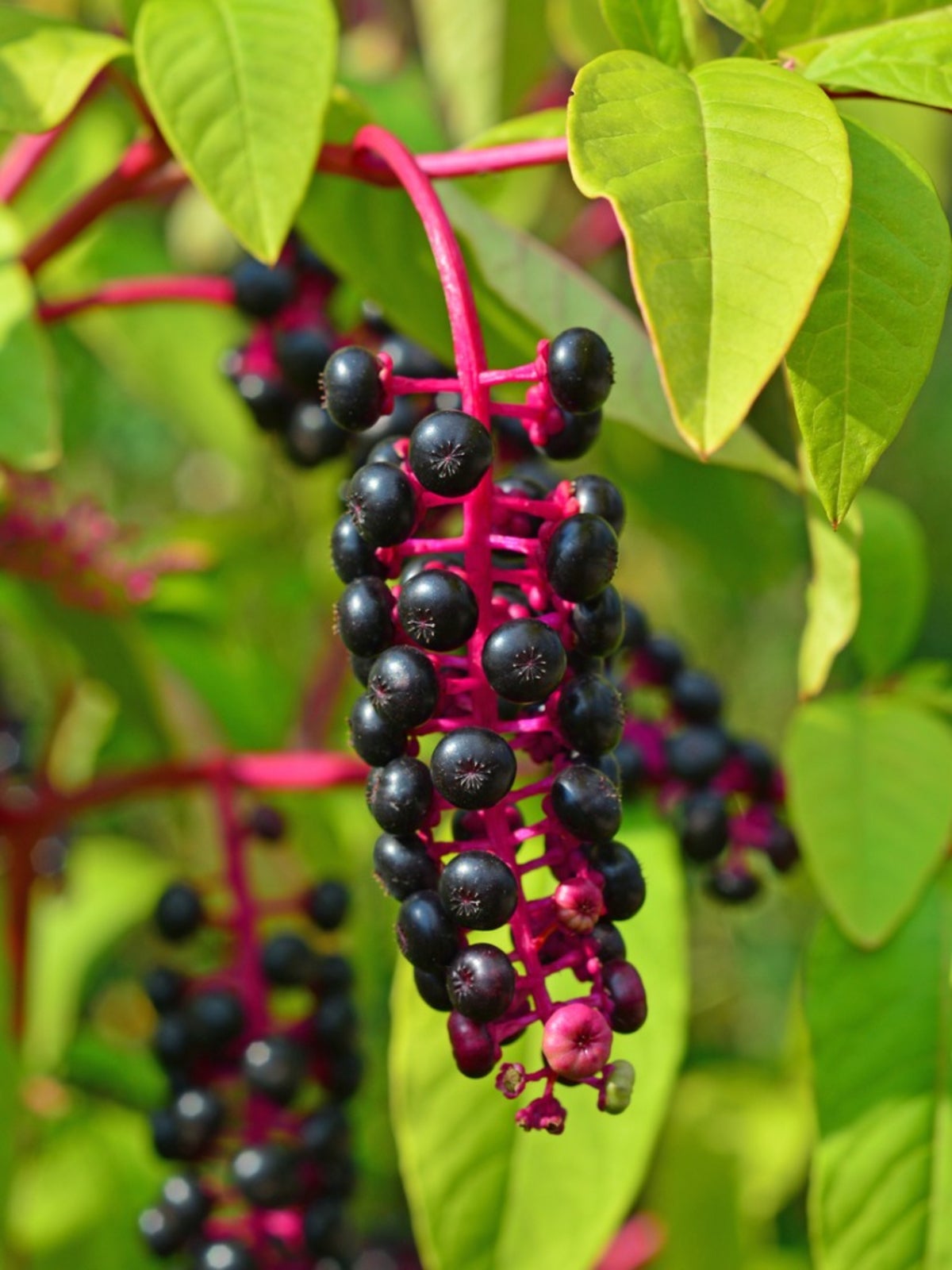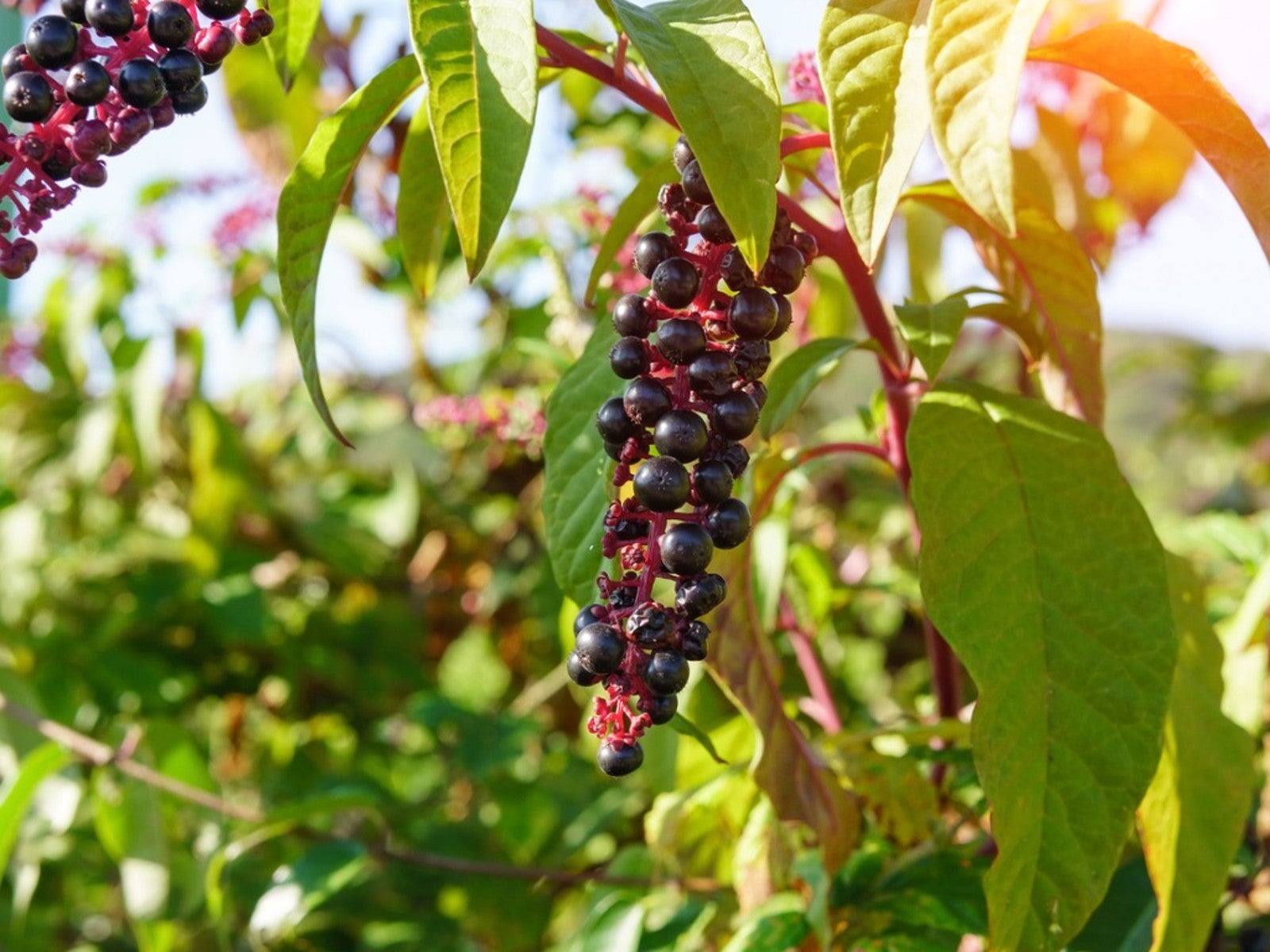Controlling Pokeweed: How To Get Rid Of Pokeberry Plants
Identify and control the invasive pokeweed to help prevent accidental ingestion by domestic pets and children.


Historically, Native Americans used parts of pokeberry weed in medicine and food, and many people down South have put the fruit into pies-- but, you need to be careful how to use pokeweed berries to avoid toxic reactions.
What is Pokeweed?
Pokeweed or pokeberry (Phytolacca americana) is a native plant that grows in disturbed soils, such as fields and pastures. It's a tenacious grower that can grow up to ten feet (3 m). The plant is hazardous to livestock and all parts of the plant are considered toxic.
Pokeweed is a perennial with a red, woody stem of long, oval leaves that may grow up to ten inches (25 cm) long. Greenish flowers appear in July to September and yield to grape-like clusters of berries.
While the fruits have been used in traditional medicine and pies, they are filled with compounds that cause unpleasant physical reactions.
Important Note: It is best to get rid of pokeberry plants to prevent ingestion by children. Small amounts generally do not harm adults, but the plant is full of several toxic compounds. The roots are the most toxic, but all parts of the plant are generally unsafe. Leaves increase in toxicity with maturity but the juvenile foliage has been part of salads for generations. They need to be boiled twice, with a change of water each time to make the leaves safe for consumption. Berries are the least toxic, but it is wise not to ingest them unless you know proper preparation.
Common Pokeweed Control
Manual removal for common pokeweed control requires you to dig deeply and get out the entire taproot. Pulling is not often successful because it leaves behind roots that will regenerate.
If you do nothing else, remove the fruits from the plant before they spread. The plant can produce up to 48,000 seeds, which remain viable in soil for 40 years. Birds seem unbothered by the berry toxicity and enjoy the fruit, planting seeds wherever they are excreted.
Gardening tips, videos, info and more delivered right to your inbox!
Sign up for the Gardening Know How newsletter today and receive a free copy of our e-book "How to Grow Delicious Tomatoes".
While many experts suggest using toxic chemicals, we recommend contacting your local extension service or even a local garden center to find the safest organic product to use on pokeweed.
How to Use Pokeweed Berries
If you have some of this plant growing on your property and are feeling adventurous, you can try to use the berries in a pie. A safer use for the fruit, however, is as an ink or dye. Crushed berries yield a tremendous amount of juice, which was once used to color inferior wines. The juice also will dye fabrics a deep crimson or fuchsia color. But regardless, try to make a point of removing the berries to prevent the spread of the weed.

Bonnie Grant is a professional landscaper with a Certification in Urban Gardening. She has been gardening and writing for 15 years. A former professional chef, she has a passion for edible landscaping.
-
 Looking For Plants To Give You The Soft And Fuzzies? Try These 5 Fuzzy Leaf Plant Options
Looking For Plants To Give You The Soft And Fuzzies? Try These 5 Fuzzy Leaf Plant OptionsLovers of texture, drama, silver foliage and tactile plants will adore these special sensory garden additions. These fuzzy leaf plant options will leave you all aglow
By Susan Albert
-
 Get Ready For A Summer Of Hummers! Grow These Full Sun Hummingbird Plants and Flowers
Get Ready For A Summer Of Hummers! Grow These Full Sun Hummingbird Plants and FlowersIf you’re lucky enough to enjoy a sunny backyard, make sure you are maxing out on your pollinator opportunities and grow these full sun hummingbird plants and flowers
By Tonya Barnett
